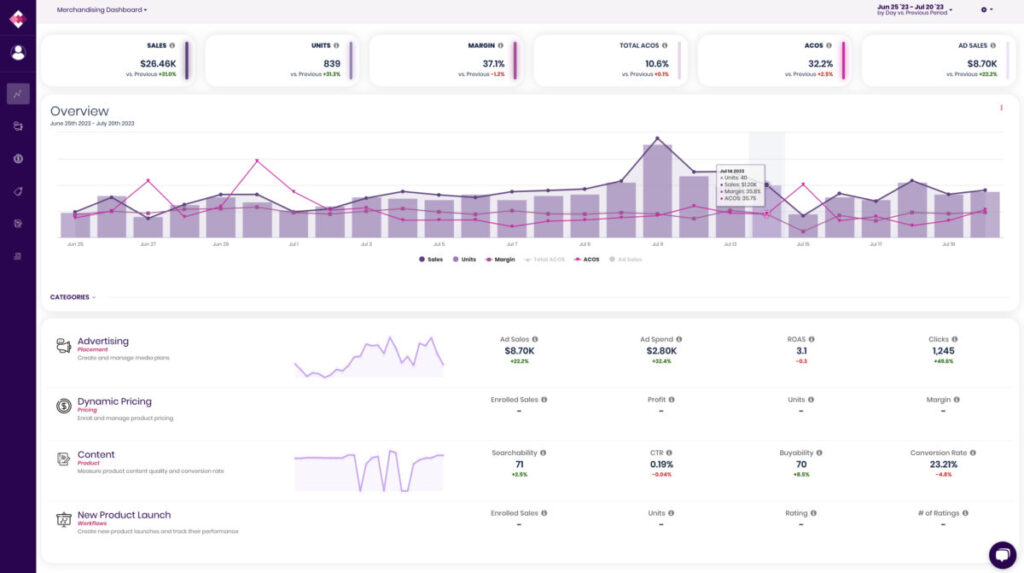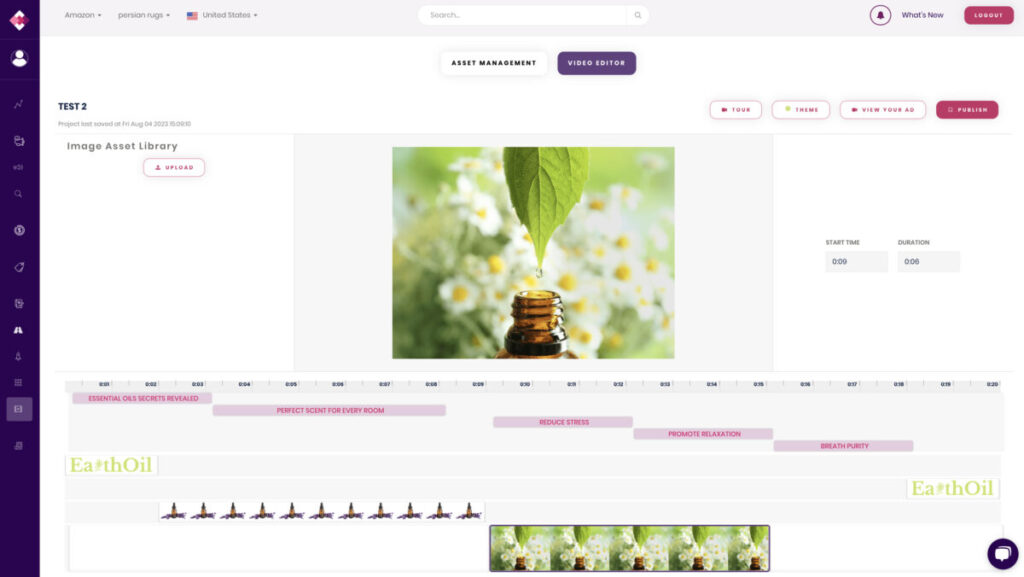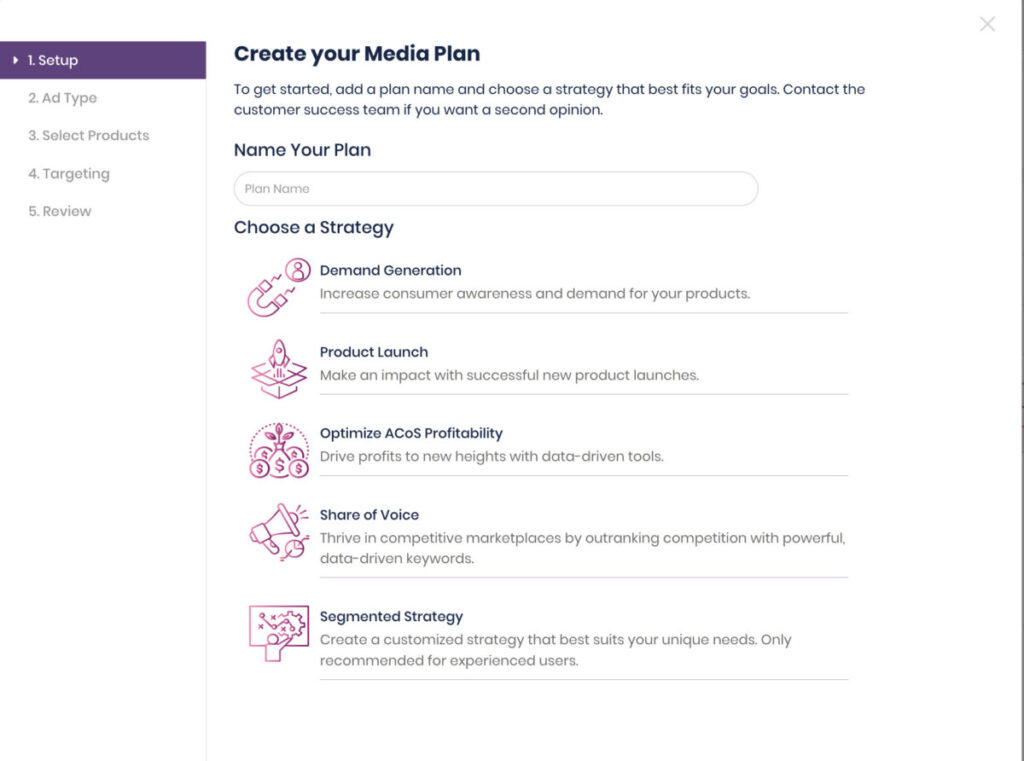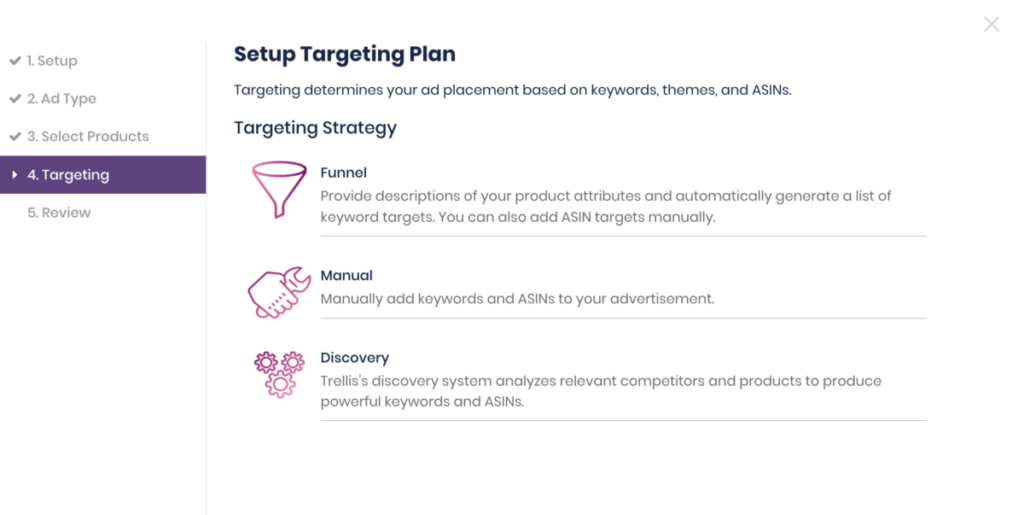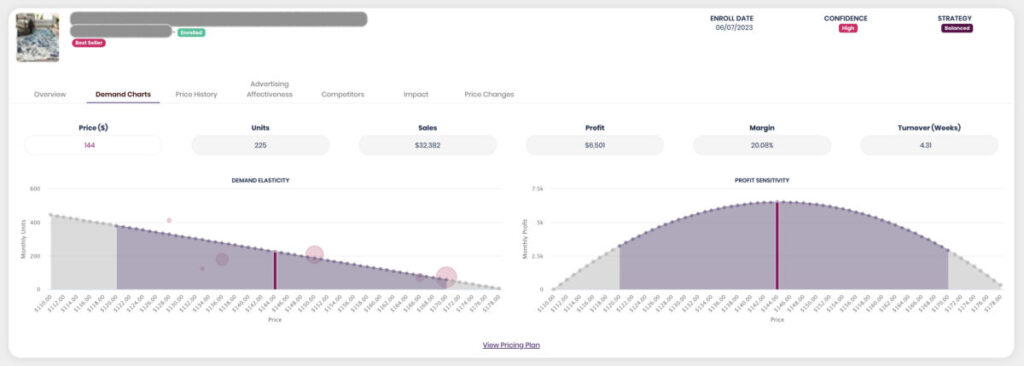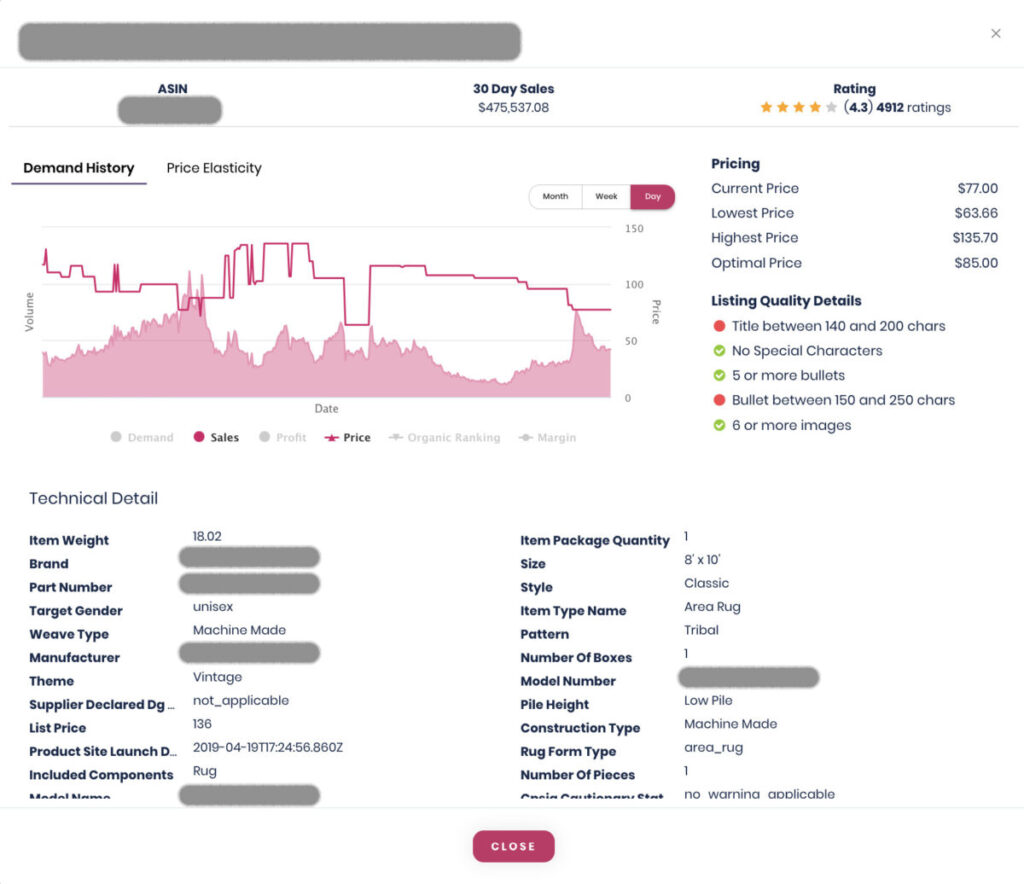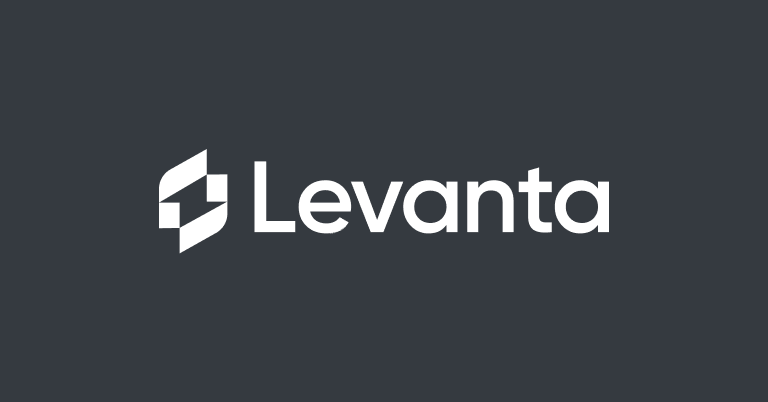
Overview
Attention, ecommerce entrepreneurs. Here are some statistics to think about as you plan to start (or strategize to grow) your business: There are 12 million ecommerce brands competing for the attention of more than two billion online shoppers. Various segments of these shoppers will hit up online marketplaces like NewEgg or Overstock, and a growing number of them are making Walmart the virtual mall of their choice. One thing all two billion shoppers have in common? They all visited Amazon at some point in any given month.
So how do you, our entrepreneurial reader, get your brand to the front of the pack? Increasingly, the answer to that question is: software. The algorithms that power these marketplaces are all data and automation, but for business owners the goal is amalgamation and capital. Nobody starts a retail operation because they want to understand data science. The team behind Trellis got this dynamic from the start, and aimed to make the platform something that doesn’t just provide business intelligence, but also the tools to execute on that intelligence.
One of Trellis’s founders and current CTO, Dominic Plouffe, was also the co-founder and CTO of a company called 360pi a decade ago. It was there that the idea of the “digital shelf” was conceived, with 360pi being an intelligence tool made for ecommerce companies looking to optimize their “placement” on that shelf. Trellis aims to take business intelligence to the next level, using insights to create targeted and effective ad campaigns. Powered by an AI that can also automate a lot of the tedious tasks required, Trellis users will spend a lot less time figuring out their pricing, or where and when to place ads, and focus more of their energy on fulfilling the orders that their Trellis-powered ad campaigns will yield.
It’s a potent combination of abilities and has attracted the attention of scores of ecommerce brands. Luxe Weavers, SimpliHome, Dandy Blend, South Shore, FireXO, Backyard Discovery—the list is long, and growing. That kind of buy-in means the landscape only gets more competitive, and for ecommerce the brands the question is no longer Will you use software to help grow your sales?. The question is now simply, Which one will you use? Read on to see so many have chosen Trellis.
Pricing
As SaaS software, Trellis is offered for use through a monthly subscription. The pricing is based on users’ revenue to ensure that costs don’t outpace earnings.
- Entrepreneur, $299/mo — For revenue up to $2m annually — Advertising Placement, Product Content, Onboarding and Training, Customer Support, Bi-weekly check-ins for the first 60 days
- Growth, $999/mo — For revenue between $2m and $10m annually — All of the above, plus: unlimited bi-weeky check-ins and quarterly business reviews
- Professional, $1,499/mo — For revenue between $2m and $10m annually — All of the above, plus: Dynamic Pricing, and Promotions & Deals
- Custom, $Custom/mo — For revenue over $10m annually — All of the above, plus Executive Sponsorship
At all levels you’ll also pay a fee for each marketplace you sell on and each brand you sell. There are additional add-ons offered, like Managed Service, Workflow Automation, and analytics around consumer Purchase Behavior and your brand’s Digital Shelf.
The Details
Trellis organizes its features around what it calls the Four Ps—Product, Placement, Pricing, and Promotion—and the platform’s Dashboard follows this. It’s a very informative dashboard, giving you overall sales numbers, which can be further broken down into a whole of different KPIs—total sales, ad spend, ad sales, ACOS, ROAS, and more. The visibility of these different KPIs can be turned on or off according to need. Further down the dashboard, you’ll see more information through the lens of Trellis’s different modules—sales from promotions, for example, or metrics about the “searchability” and “buyability” of your optimized content.
One thing worth noting about the Dashboard is the way it lets users organize the sales data. With most platforms like this, results are organized and grouped by the campaigns you’ve created with the software and this is a great way to see what’s working for you. Using something like Trellis, you can see that—for example—sales of dog toys have increased as a result of a campaign you ran. But Trellis, unlike many of its competitors, will also show you the total sales of the Dog Toy category, so you can track performance from a catalog perspective. Meaning: your dog toy sales may have increased, but now you see they drastically lag behind higher performers.
Beyond the Dashboard are the four different tools (each of the four Ps) available in the platform. The first, Product, is straightforward enough, offering tools to help ecommerce brands create, organize, and optimize the content around their products (pictures, descriptions, etc.). When you update your existing listings (or just launch new ones), Trellis analyzes them and automatically optimizes them to increase your chances of both getting found and converting. There’s even a built-in video editor to ensure your content looks professional; it’s not Final Cut Pro, of course, but there’s more than enough here—in terms of templates and tools—to put something slick together and make your listings stand out.
The second P, Placement, is where Trellis really starts to show its strengths, though. Placement is referring to advertising placement—specifically when and where in the buyer experience your ads get placed. The magic of this happens behind the scenes: machine learning has identified which search keywords reflect which stage of the sales funnel a buyer is in. The algorithms then automatically bid for ad placements that will work best for your defined goals. This automation is made possible by an intuitive and easy to implement setup.
Trellis starts by asking you to define the goal of your media plan—awareness? Profitability? Share of voice?—and then choose the ad type (for Amazon, this could be a Sponsored Product, or Sponsored Display, among other choices). You’ll then choose a Targeting strategy so that the software can determine the keywords and bid prices that best align with your goals. Or you can manually enter keywords that you want to bid aggressively for and get a larger share of voice. Within these targeting options are further settings that users can configure—keywords to exclude, for example, or an explicit minimum and maximum bid—to give them finer control over how the algorithms behave on their behalf.
With all your ad options set up, the software takes the ball and runs with it, buying and placing ads at the time and place it deems most likely to realize your goals. If you choose “Greedy” mode, for example, it might bid a little higher to get you as much of the business from a keyword search as possible. If you optimize for profit, on the other hand, Trellis prioritizes margin over scale. Regardless of how you set it up, you can dig deeper into each ad to get detailed metrics on its performance. The reporting on each ad is further broken down into every product variation that you’re advertising, meaning: if you have the same t-shirt design across seven different colored shirts, that’s seven different products as far as Amazon is concerned. But you only need one ad for the design, so Trellis makes it possible for you to see the individualized results.
Within each of these ad reports, you can start getting a highly precise picture of what’s going on behind the scenes. Click on “Keywords” and you’ll see detailed stats of how Trellis is bidding for ad placements across all search terms: the per-ad bid, the total spend, how many impressions, clicks, and conversions, and more. Any or all of these keyword bids can be tweaked from here, as well, making it easy to do things like pause and restart campaigns or update bid ranges. This reporting and control can be viewed/sorted according to ASIN, as well as keywords. Trellis also strikes a great balance between automation and control when it comes to when your ads will run. The algorithm is constantly “watching” overall Amazon trends, matching ad placement with times and days it sees customers more likely to buy a given product. Trellis users can see what the software is up to, understand why it made the decisions it did, and are given the opportunity to fine-tune things.
The final thing Trellis deserves praise for is its Dynamic Pricing feature. Just as with ad placement, the platform leads with AI and automation, but leaves it up to the user to have final say. Here, the user can define a price range, desired margin, target ACoS, or even a time frame of how fast or slow they want something to sell. Machine learning surveys the entire Amazon ecosystem to understand pricing for a particular product, determining pricing based on demand and other factors that influence sales. Again, just like with Ad Placement, users still have a fine degree of control over, and insight into, the pricing strategy for their products.
Integrations
Trellis began life as an Amazon sellers tool and has since expanded to offer integration to over 150 marketplaces, including Walmart, Target, and Overstock, to name some of the bigger ones. You’ll get the most out of Trellis using it with Amazon, but their integration with Walmart runs a close second. As Walmart is still years behind Amazon in building out their marketplace, API connectivity with them is still an evolving proposition for sales tools like Trellis. As Walmart offers developers more access, Trellis will continue to keep pace and expand its Walmart offering.
Beyond these “virtual malls,” Trellis also integrates with Shopify and Magento for brands that want to keep more of their sales revenue.
Conclusion
Ecommerce doesn’t seem like a new innovation—and 25+ years of Amazon tell us it's not—but it’s still an evolving form of retail. Even with 2 billion online shoppers a month, ecommerce still hasn’t reached its full potential. What is clear is that marketplaces like Amazon and Walmart are here for the duration, and ecommerce brands of all kinds and sizes are going to need more than just a quality product and marketing to win sales. In a scenario like this, tools like Trellis will become indispensable.
Trellis itself already is: the Amazon ad placement system is a virtual Rube Goldberg device of absurd connections, causes, and effects. Powered by algorithms, humans can only keep up with it so much. Trellis, on the other hand, meets Amazon where it’s at: at the algorithm and AI level, because it takes one to know one. For ecommerce brands setting up shop in Amazon’s marketplace, they can give themselves a better chance to grow with support from Trellis. We just realized why it’s called Trellis.
-
Features
-
Ease of Use
-
Reporting
-
Integrations

